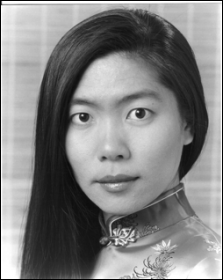
RI Seminar
April

3:30 pm to 4:30 pm
Event Location: NSH 1305
Bio: Yanxi Liu received her B.S. degree in physics/electrical engineering (Beijing, China), her Ph.D. degree in computer science for group theory applications in robotics (University of Massachusetts, Amherst, US), and her postdoctoral training in the robotics lab of LIFIA/IMAG (Grenoble, France). Before joining the Robotics Institute of Carnegie Mellon Institute in 1996 she spent one year at DIMACS (NSF center for Discrete Mathematics and Theoretical Computer Science) under an NSF research-education fellowship award. Dr. Liu worked for ten years at CMU as a research faculty member and served in the CMU faculty senate for multiple years. From June 2013 to August 2014, Dr. Liu visited Microsoft Silicon Valley, Google Mountain View and Stanford University, resulted in one pending and one granted patent. Currently, Dr. Liu is a full professor with the School of Electrical Engineering and Computer Science at Penn State University, where she co-directs the lab for perception, action and cognition (LPAC), and the Human Motion Lab for Taiji Research. Dr. Liu’s research interests span a wide range of applications including computer vision, computer graphics, robotics, human perception and computer aided diagnosis in medicine, with one central theme: computational regularity. Currently, Dr. Liu serves as an associate editor for IEEE Transaction of Pattern Analysis and Machine Intelligence (PAMI) and the Journal of Computer Vision and Image Understanding (CVIU). She will be the program co-chair for the 2017 CVF/IEEE Computer Vision and Pattern Recognition (CVPR) Conference.
Abstract: Regularities with varying form and scale pervade our natural and man-made world. From insects to mammals, the ability to sense regular patterns has a neurobiological basis and has been observed in many levels of intelligence and behavior. From Felix Kleinʼs Erlanger program, D’Arcy Thompson’s Growth-and-Form, to the Gestalt principles of perception, much of our understanding of the world is based on the perception and recognition of repeated patterns, generalized by the mathematical concept of symmetry and symmetry groups. Given the ubiquity of symmetry in both the physical and the digital worlds, a computational model for symmetry-based regularity perception is especially pertinent to computer vision, computer graphics, and machine intelligence in general, where an intelligent being (e.g. a robot) seeks to perceive, reason and interact with the chaotic world in the most effective and efficient manner. Surprisingly, we have limited knowledge on how humans perceive regular patterns and little progress has been made in computational models for noisy, albeit near-regular patterns in real data. In this talk, I present parallels as well as differences between machine perception and human perception of visual regularity. I shall report our recent results on understanding human perception of wallpaper patterns using neuroimaging (EEG, fMRI), and our successful attempt at building a symmetry-based Turing test to tell humans and robots apart.